Setting Your Board Up for Success
The composition of a board room is in constant shift, with new members entering the fold and the seasoned ones completing their tenure. A board’s perpetual transformation is a critical aspect of organizational growth and strategic development, and new directors bring a wealth of insights and experiences to enrich their organizations. The potential of ever evolving boards necessitates intentional planning and deliberate action, with a structure approach to board preparedness as a need to have rather than a nice to have.
Previously, Vista Cova released the Strategic Frameworks resources to acknowledge and address the acceleration of change the nonprofit sector has seen. Now, the Board Preparedness resource will help you seize this moment of change through the insights of 35 association leaders who have been navigating these waters and a unique framework to preparing your board members for success.
Setting Your Board Up for Success
Boards today face countless emerging challenges and rapidly changing industries. Building a strong foundation for your new and veteran board members through a focused, customized approach will enable them to thrive throughout their term, but developing your leaders begins even earlier.
Leaders do not appear from thin air; they grow and develop as they work in our organizations and industries. Identifying future leaders in committees, councils, or any other proving ground, can help you lay the groundwork for a leadership pipeline. Although the pathway to leadership will have many shapes and sizes depending on the organization, the consistent factor between them all is the critical design of best preparing them to succeed in their roles.
Seeding good governance practices and elevating a working knowledge of the organization’s culture and strategy isn’t simply accomplished by handing over a document for reading. For example, the Bay Area Apartment Association in Temple Terrace, Florida, hosts a Leadership Lyceum where participants complete mock board meetings and review financial statements, giving a better understanding of the functions of a board before a member is even nominated.
Board Members Before, During, and After
Developing your board is a continuous process. Organizations and leaders must engage with board members well before they begin their term, either through a development process such as a structured program of leadership development as they are involved with committees or components of the organization or, if seeking board service, as they complete the campaign and nominations process. During these processes, you can identify and meet future board members, solidifying (or developing) your relationship with them. Fostering a strong, communicative relationship with your board members is critical in working with them on enacting the organization and board’s goals.
As the top leaders that will serve on your board emerge, it is important to understand the needs of each new and returning board member and align your preparation efforts based on their knowledge and experience. Do they fully understand the vision of the organization? Do they comprehend financial documents? Have they discussed what success as a board member look like? What does it look like for your organization? Developing a checklist and consulting Vista Cova’s Board Preparedness resource can help with this, as well as considering four important aspects of your process:
Priorities: What are the most important pieces of information an incoming board member needs to know? A new strategic framework or critical priorities may require more depth in the onboarding process to better acquaint board members with these focus areas. As you start a cycle of board preparation, ensure you are clear on what the highest priority components.
Density: Even as critical priorities emerge; you must be careful of a “firehose” of content for new directors to absorb. Consider hosting multiple onboarding sessions for new board members so they have adequate time and space to focus on and understand the organization’s priorities and strategy. An overload of information will diminish retention.
Inclusion: The onboarding process should be inclusive and accessible to all participants. Before any learning & development opportunities, encourage board members to share their format preferences so that you can increase their access to this process.
Feedback: How do you grow and improve between orientation cycles? Intentionally including service feedback in the confirmation stage of board preparedness, where you structure a role for returning board members to share their experience is critical. Subsequently, each cycle, you can then observe how new members navigate the onboarding process and speak with them directly to better understand where they believe improvements can be made.
Defining Success
Without defining success at the outset of service, it is difficult for a board member to feel successful. Each board member should be invited to share their own hopes and aspirations for their time in leadership. Are they looking to grow as a leader? Are they interested in public speaking and want to speak during events or conferences? By having your incoming board members share what success looks like for them, you can help tailor their experience on the board to match that, while directing them as champions for the organization.
The composition of a board room is a place of continual evolution, with new members entering the fold and the seasoned ones completing their tenure. Through a robust and well-thought-out plan to prepare your board for service, you can help your realize a greater impact from their contributions as they are ready to serve on day one.
Want to learn more about how you can set your board up for success? Download the Board Preparedness resource now, and contact Vista Cova for more information.
